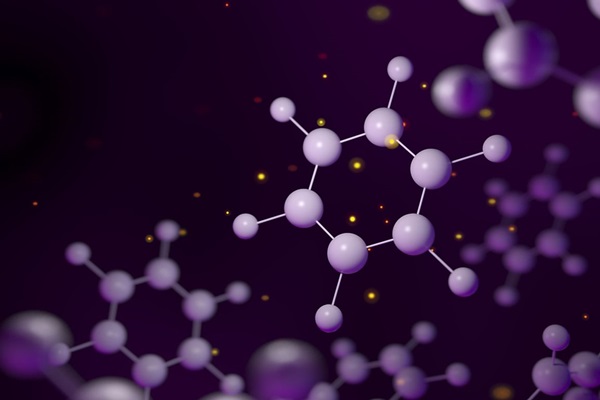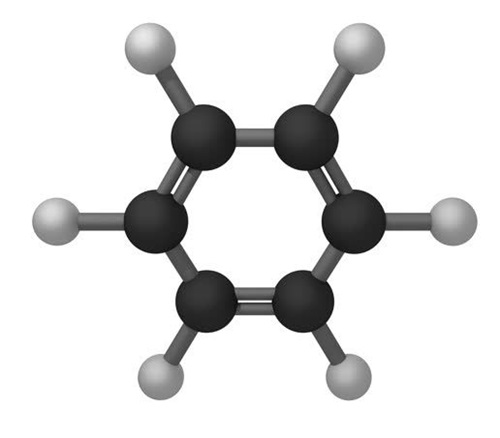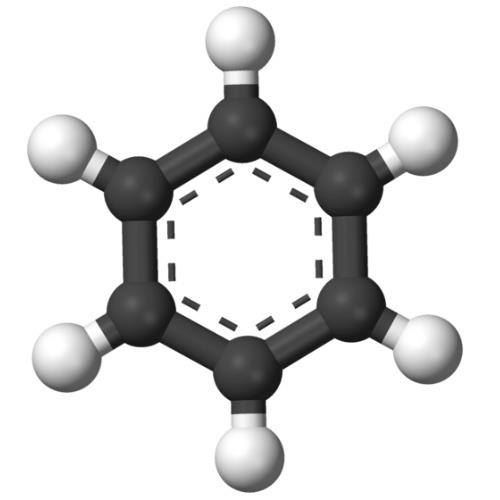Benzene-Health Hazard and Toxicity
Description
Benzene is a colorless, volatile, highly flammable liquid that is used extensively in the chemical industry and received wide interest in the early days of organic chemistry.Because of its structure, benzene is a very stable organic compound. It does not readily undergo addition reactions. Addition reactions involving benzene require high temperature, pressure, and special catalysts.
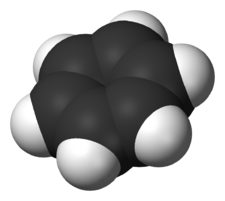
Toxicity Data
LD50 oral (rat) 930 mg/kg
LC50 inhal (rat) 10,000 ppm (7 h)
PEL (OSHA) 1 ppm (3.2 mg/m3)
TLV-TWA (ACGIH) 10 ppm (32 mg/m3)
STEL (ACGIH) 5 ppm (16 mg/m3)
Health Hazard
Exposure to low concentrations of benzene vapor or liquid causes dizziness, lightheadedness, headache, loss of appetite, stomach upset, and irritation to the nose and throat. Prolonged exposure to high concentrations of benzene leads to functional irregularities in the heart beat and in severe cases to death. Benzene is a known carcinogen to humans. It causes leukemia and blood disorders such as aplastic anemia. The major types of leukemia related to benzene exposure are (i) acute myelogenous leukemia (AML); (ii) acute lymphocytic leukemia (ALL); (iii) chronic myelogenous leukemia, also called chronic myeloid leukemia (CML); (iv) chronic lymphocytic leukemia (CLL), and hairy cell leukemia (HCL). Occupational exposure to benzene is frequent, such as in road-tanker drivers and Chinese glueand shoe-making factory workers. Exposure to benzene has been linked with the development of rarer forms of leukemia, such as AML and ALL. It has also been linked to lymphoma and rare blood diseases.
Toxicity
The acute toxicity of benzene is low. Inhalation of benzene can cause dizziness, euphoria, giddiness, headache, nausea, drowsiness, and weakness. Benzene can cause moderate irritation to skin and severe irritation to eyes and mucous membranes. Benzene readily penetrates the skin to cause the same toxic effects as inhalation or ingestion. The chronic toxicity of benzene is significant. Exposure to benzene affects the blood and blood-forming organs such as the bone marrow, causing irreversible injury; blood disorders including anemia and leukemia may result. The symptoms of chronic benzene exposure may include fatigue, nervousness, irritability, blurred vision, and labored breathing. Benzene is regulated by OSHA as a carcinogen (Standard 1910.1028) and is listed in IARC Group 1 ("carcinogenic to humans"). This substance is classified as a "select carcinogen" under the criteria of the OSHA Laboratory Standard.
Flammability and Explosibility
Benzene is a highly flammable liquid (NFPA rating = 3), and its vapors may travel a considerable distance to a source of ignition and "flash back." Vapor-air mixtures are explosive above the flash point. Carbon dioxide and dry chemical extinguishers should be used to fight benzene fires.
Reactivity and Incompatibility
Fire and explosion hazard with strong oxidizers such as chlorine, oxygen, and bromine (in the presence of certain catalysts such as iron) and with strong acids.
Storage and Handling
Because of its carcinogenicity and flammability, benzene should be handled using the "basic prudent practices" of Chapter 5.C, supplemented by the additional precautions for work with compounds of high chronic toxicity (Chapter 5.D) and extremely flammable substances (Chapter 5.F). In particular, work with benzene should be conducted in a fume hood to prevent exposure by inhalation, and splash goggles and impermeable gloves should be worn at all times to prevent eye and skin contact. Benzene should be used only in areas free of ignition sources.
Accidents
In the event of skin contact, immediately wash with soap and water and remove contaminated clothing. In case of eye contact, promptly wash with copious amounts of water for 15 min (lifting upper and lower lids occasionally) and obtain medical attention. If benzene is ingested, obtain medical attention immediately. If large amounts of this compound are inhaled, move the person to fresh air and seek medical attention at once.
Disposal
Excess benzene and waste material containing this substance should be placed in an appropriate container, clearly labeled, and handled according to your institution's waste disposal guidelines.
Related articles And Qustion
See also
Lastest Price from Benzene manufacturers

US $0.00-0.00/kg2025-04-21
- CAS:
- 71-43-2
- Min. Order:
- 1kg
- Purity:
- 99.99%
- Supply Ability:
- 20 tons
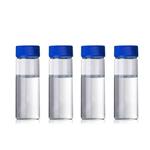
US $2.00/kg2024-12-17
- CAS:
- 71-43-2
- Min. Order:
- 10000kg
- Purity:
- 99%
- Supply Ability:
- 10000000

